Background: Otoplasty is a very common aesthetic ear surgery that has a long history of various techniques to lessen the appearance of the protruding ear. Regardless of the technique used the goal is to being the ear to a more pleasing position along the side of the head. What the position is has an ideal numerical value known as the auriculocephalic angle which is in the range of 25 to 35 degrees. But in surgery there is no angular measuring device that is precisely used to measure this angle as the ear is repositioned. It is more of a judgment as to the degree of change that looks good to the surgeon’s eye.
Besides asymmetry between the two sides the main risk in otoplasty surgery is over- vs undercorrection.While the auriculocephalic angle can be a measured guideline to determine the success of otoplasty surgery, ultimately it is the patient’s assessment of the result that matters most. As a result there are going to be some patients who feel their ears need to be moved back more than the surgeon’s intraoperative judgment and, hopefully far more rarely, the need to bring the ears back out a bit.
While the techniques have been well described for primary otoplasty, how to do do so in a secondary otoplasty for further ear setback is less well known.
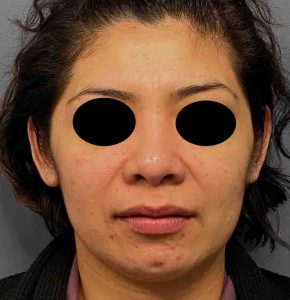

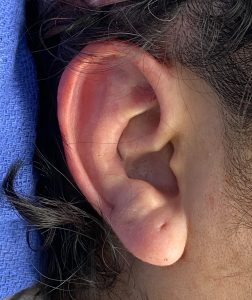
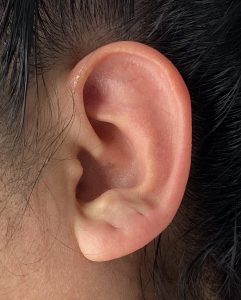
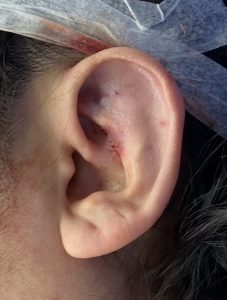

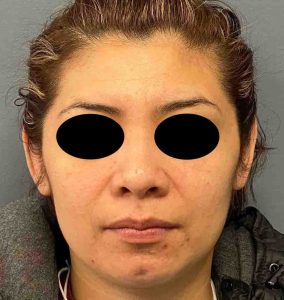
Case Highlights:
1) A secondary otoplasty can be performed to further reduce the auriculocephalic angle.
2) To maximize the position of the ear as close to the side of the head as possible cartilage excision is needed from the concha and/or some reduction of the postauricular sulcus.
3) While the auriculocephalic angle can be reduced below the normal range it is important to prevent the helical rim from disappearing behind the anti helical fold.
Dr. Barry Eppley
Indianapolis, Indiana



